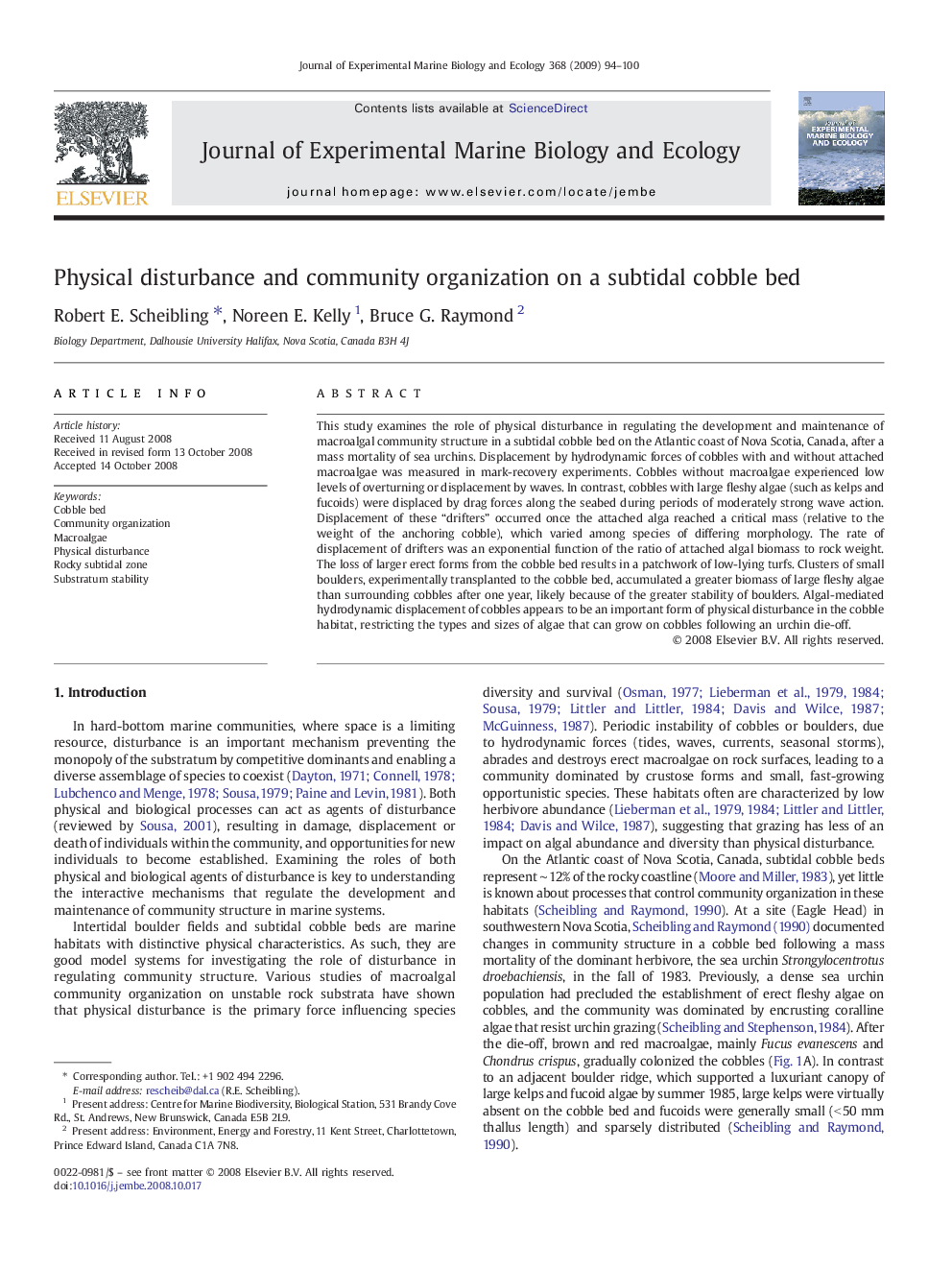| Article ID | Journal | Published Year | Pages | File Type |
|---|---|---|---|---|
| 4397055 | Journal of Experimental Marine Biology and Ecology | 2009 | 7 Pages |
This study examines the role of physical disturbance in regulating the development and maintenance of macroalgal community structure in a subtidal cobble bed on the Atlantic coast of Nova Scotia, Canada, after a mass mortality of sea urchins. Displacement by hydrodynamic forces of cobbles with and without attached macroalgae was measured in mark-recovery experiments. Cobbles without macroalgae experienced low levels of overturning or displacement by waves. In contrast, cobbles with large fleshy algae (such as kelps and fucoids) were displaced by drag forces along the seabed during periods of moderately strong wave action. Displacement of these “drifters” occurred once the attached alga reached a critical mass (relative to the weight of the anchoring cobble), which varied among species of differing morphology. The rate of displacement of drifters was an exponential function of the ratio of attached algal biomass to rock weight. The loss of larger erect forms from the cobble bed results in a patchwork of low-lying turfs. Clusters of small boulders, experimentally transplanted to the cobble bed, accumulated a greater biomass of large fleshy algae than surrounding cobbles after one year, likely because of the greater stability of boulders. Algal-mediated hydrodynamic displacement of cobbles appears to be an important form of physical disturbance in the cobble habitat, restricting the types and sizes of algae that can grow on cobbles following an urchin die-off.
